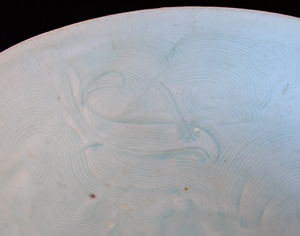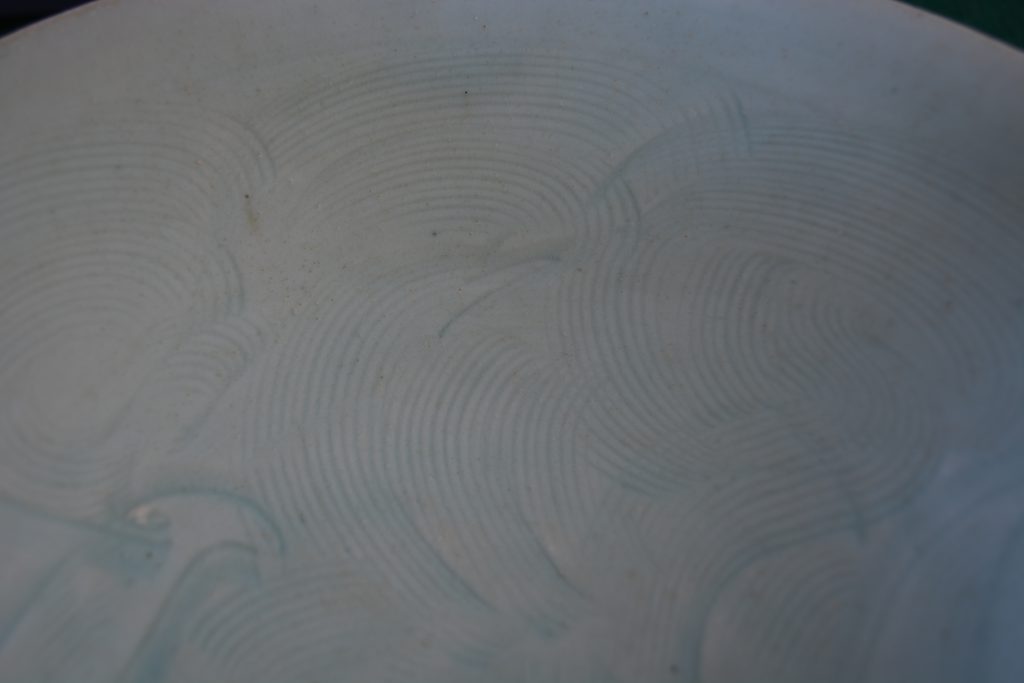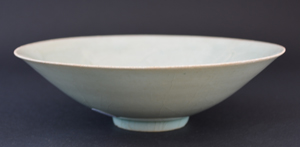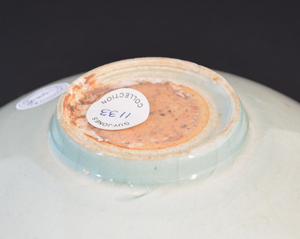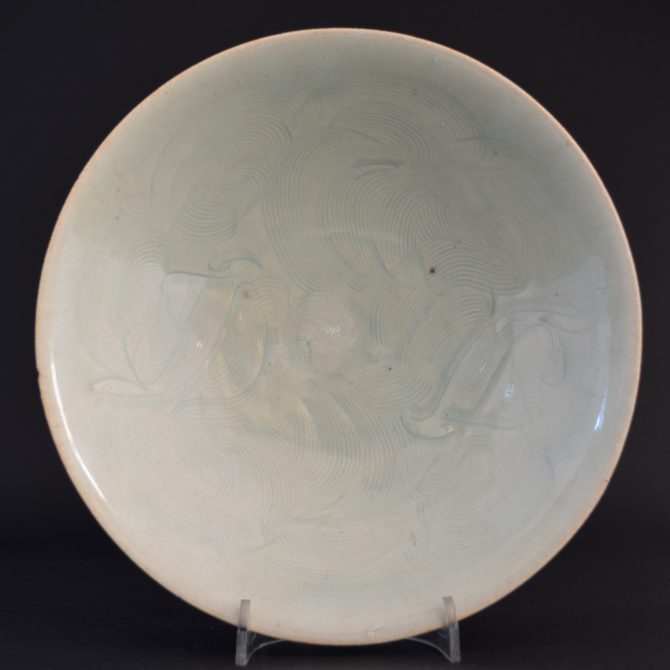
SONG DYNASTY 960 – 1279 Qingbai Ware
A Finely Potted Song Qingbai Bowl Probably Hutian Kilns, Jingdezhen, c.12th Century. The Thinnly Potted Bowl with a Carved and Combed Design of Two Fish Swimming Among Waves.
SOLD
- Condition
- In excellent condition. One minute rim chip which shows more on the back of the rim c.3 x 2 mm. Some light scratches.
- Size
- Diameter : 19.5 cm (7 3/4 inches)
- Provenance
- R&G McPherson Antiques The Collection of Mr and Mrs Guy Jones. Label to base 1133.
- Stock number
- 24071
- References
- For a related Song Qingbai bowl with a twin fish design see : Chai Kiln & Hutian Kiln, (Nanning Publishing? 2004. ISBN 7-80674-591-2) page 134.
Information
Qingbai porcelain bowls of this type were fired on their rims, therefore the glaze needed to wiped off. After firing the unglazed rim was normally bound in metal, this rarely survives, if it does it in normally in a decayed fragmentary condition.
Qingbai Ware :
The earliest known qingbai wares were produced in Jingdezhen in Jiangxi province around the late 10th century and are characterized by faint pale-blue glazes on low, wide forms. Qingbai continued to be enormously popular and highly produced throughout the Song dynasty (960-1279) and was prevalent in the Yuan dynasty (1279-1368), but slackened during the Ming dynasty (1368-1644) until being replaced by tianbai, ‘sweet white’ ware. The initial forms of qingbai were simple bowls and dishes, but by the mid-Northern Song the forms had advanced to include a wide variety of objects used for daily life such as ewers, boxes, incense burners, granary models, vases, jars, sculptures, cups, cupstands, water droppers, lamps, grave wares, and tools for writing and painting. The precedent for the majority of these forms is found in earlier metalwork and lacquer and Rawson has suggested that the imitation of silver was the primary force behind the production of white wares, including qingbai. See our `History` section for more information about Song Porcelain and Stoneware by Mindy M. McDonald.
Fish / Yu :
The Chinese word for fish `Yu` is pronounced in the same way as the word for abundance. So fish have come to represent prosperity and the carp is often represented as sign of success because of its perseverance, swimming up river. Pairs of fish swimming together, representing marital bliss, were common from the Southern Song (1128-1279) but it was in the Yuan Dynasty (1279-1368) that fish swimming with aquatic plants became a common subject, the patterns were based on popular designs found in Southern China. Some of the earliest Chinese blue and white porcelain (c.1320-1350) depicts fish swimming with plants, frequently lotus as this represented purity. These Yuan designs were shown in the center of bowls and dishes surrounded by concentric geometric borders.It was not until the 16th century that freer, more open designs of fish swimming among sea weed and crabs were popular.
